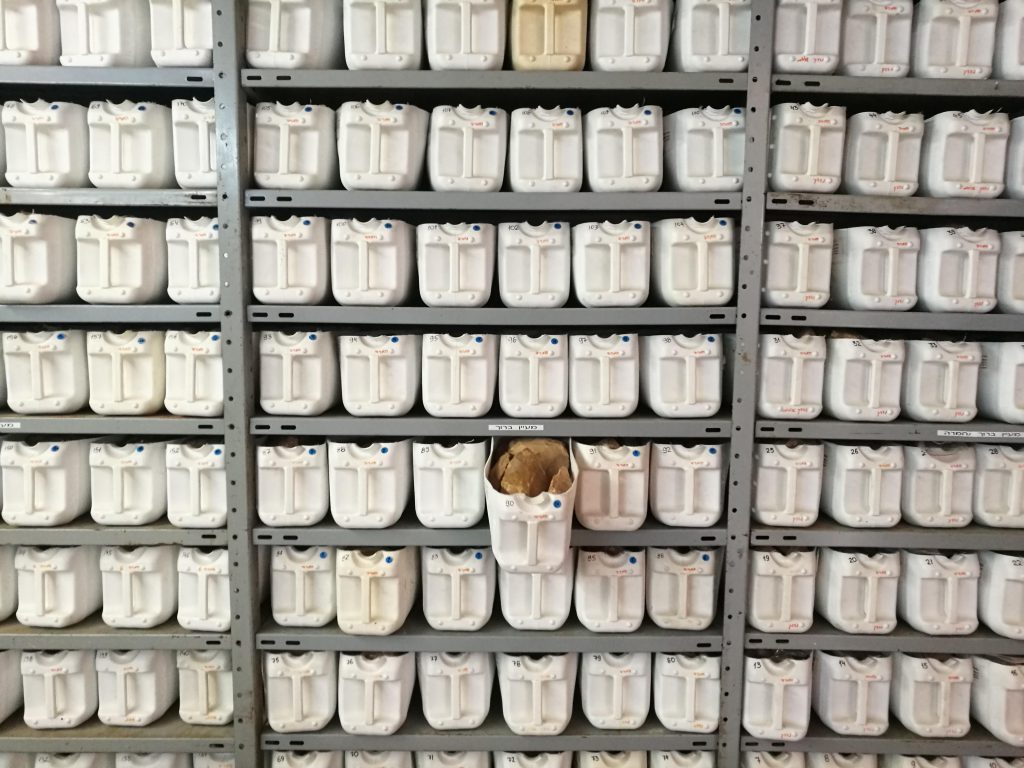
The Acheulian site of Ma'ayan Baruch
Recent Paper: Finkel et al. Geoarchaeology 2023
https://doi.org/10.1002/gea.21968
History of research
–Collection of Acheulian stone tools in the vicinity of the site began in the 1920s. The site has never been excavated and all finds are the result of surface collection. During the 1950s and 1960s, A. Asaf amassed the main collection of surface finds (Stekelis and Gilead 1966, Map 1). During the 1970s, a large collection of tools was assembled from IDF anti-tank trenches (Ronen et al. 1980).
Papers and Information
- Stekelis, M., Gilead, D., 1966. Ma’ayan Barukh, a Lower Paleolithic site in the Upper Galilee. Mitekufat Haeven – Journal of the Israel Prehistoric Society. 8, 1–23.
- Ronen, A., Ohel, M.Y., Lamdan, M., Asaf, A., 1980. Acheulian Artifacts from two Trenches in Ma’ayan Barukh. Israel Exploration Journal. 30, 17–33.
- Sharon, G., Berger U., Bekker-Shamir M., Centi L. and Francesco Valletta 2022. Ma’ayan Barukh. Hadashot Arkheologiyot, 134.
- Sharon, G. Muller, A. and Gubenko, N. 2022. In search of the Acheulian site of Ma’ayan Barukh. Journal of the Israel Prehistoric Society 52, 6–31
The Site location and Geology
Geology – The geology of the area includes a layer of soil (terra rossa) covering a thick layer of travertine (Kfar Yuval Travertine), which in turn overlies basalt bedrock (Hasbani basalt; Stekelis and Gilead 1966 after Picard 1963).
Stratigraphy – The tools apparently originated in the red-colored soil topping the tufa (travertine) layers. For unclear reasons, varying quantities of travertine cover some of the tools.
Date – Heimann (1990) described the Kfar Yuval Travertine as being intercalated with Hasbani basalt dated to ca. 0.9 mya. However, the Acheulian tools that were found in the upper travertine layers are very likely younger (Saragusti 2003). Attempts to date the travertine in situ have yielded results that were beyond the limit of the dating method (Saragusti 2003; Schwarcz et al. 1980). Thorium-230/Uranium-234 dating was applied to the travertine coating of two handaxes from the Mt. Scopus collection. The results were very close to the limit of the method and suggest an age very close to the system equilibrium, dating the assemblage to ca. 450–500 kya (Sharon 2007).
Lithic Assemblage
Size of assemblage – The report records 3775 items in the assemblage (Stekelis and Gilead 1966). Although claims have been made that an even higher number of bifaces was collected from the site, no record is available. Recent count of the tools in the MB museum collection resulted in 3197 handaxes, 29 cleavers, 9 picks and 48 additional bifacial implements. Additional tools are found in other collections but their total number is estimated under 300 (Sharon et al. 2022).
Raw materials – A large majority of the tools were made on high-quality gray flint, apparently Eocene. It is assumed that the outcrops are situated in Lebanon, some 6 km north of the site. There are 48 flint nodules and blocks in the collection, 15 of which demonstrate 1–3 flake removals. Due to the geo-political situation in the region, no sourcing study of these finds could be pursued. Although the vicinity of the site is rich in basalt, only a very few tools (4 handaxes) were made of this raw material. All flint tools are covered by patina in various shades of red, resembling the color of the site’s soil (Stekelis and Gilead 1966).
General description – The majority of handaxes were produced on flint pebbles, while some were made on tabular flint and some on flakes. These flakes are usually either primary (cortical) or a cobble that has been split in two. In many examples, the striking platforms and bulb of percussion were removed by flaking. The workmanship of the tools is very good, as indicated by the high degree of symmetry, the fine bifacial knapping and the fine retouching and shaping of the edges. 45.6% of the handaxes are cordiform and 41.6% are round or ovate. Together they present a very pronounced dominance of ovate shapes (over 90%) over pointed ones. There is also a small group of cleavers, six of which were made on flakes (Stekelis and Gilead 1966).is
Fauna - Elephants
The Maayan Baruch bones were identify as fossil remains of elephant (Elephas cf. hysudricus) – an Asian ancient Elephant
Ref –